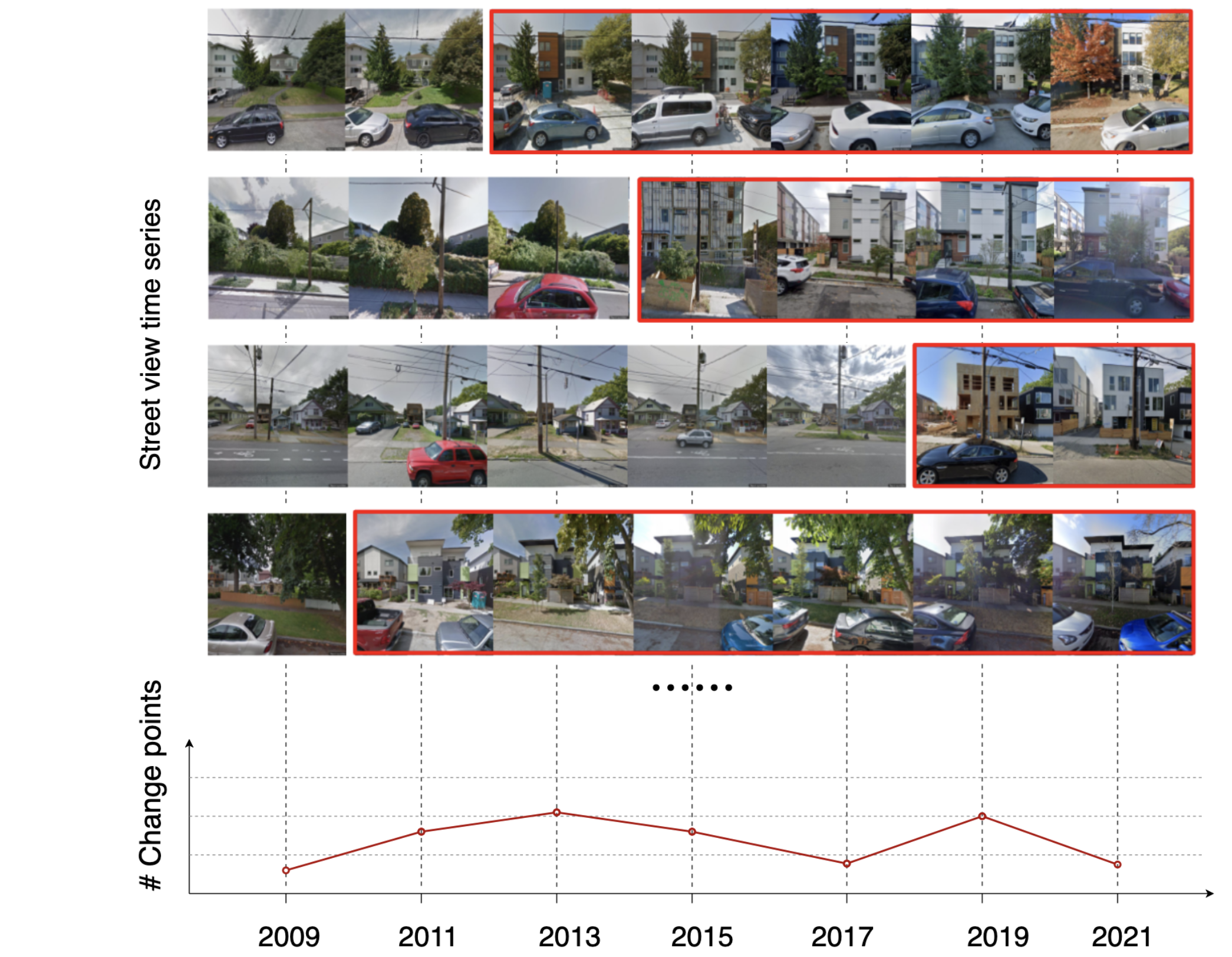Urban transformations have profound societal impact on both individuals and communities at large.
Accurately assessing these shifts is essential for understanding their underlying causes
and ensuring sustainable urban planning. Traditional measurements often encounter constraints
in spatial and temporal granularity, failing to capture real-time physical changes.
While street view imagery, capturing the heartbeat of urban spaces from a pedestrian point of view,
can add as a high-definition, up-to-date, and on-the-ground visual proxy of urban change.
We demonstrate the effectiveness of our proposed method by benchmark comparisons
with previous literature and implementing it at the city-wide level.
Our approach has the potential to supplement existing dataset and serve as a fine-grained
and accurate assessment of urban change.

